Fashion in the 1970s began with a continuation of the mini skirts, bell-bottoms, and the androgynous hippie look from the late 1960s and eventually became an iconic decade for fashion.
Generally the most famous silhouette of the mid and late 1970s for both genders was that of tight on top and loose on bottom. The 1970s also saw the birth of the indifferent, anti-conformist casual chic approach to fashion, which consisted of sweaters, T-shirts, jeans and sneakers.
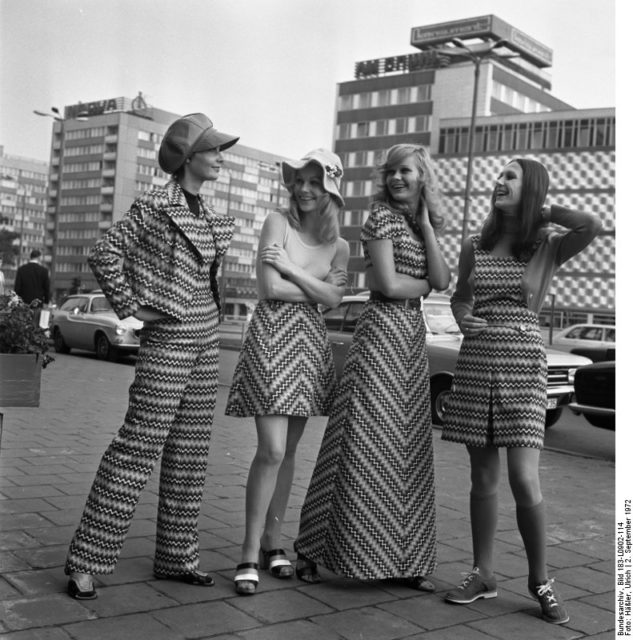
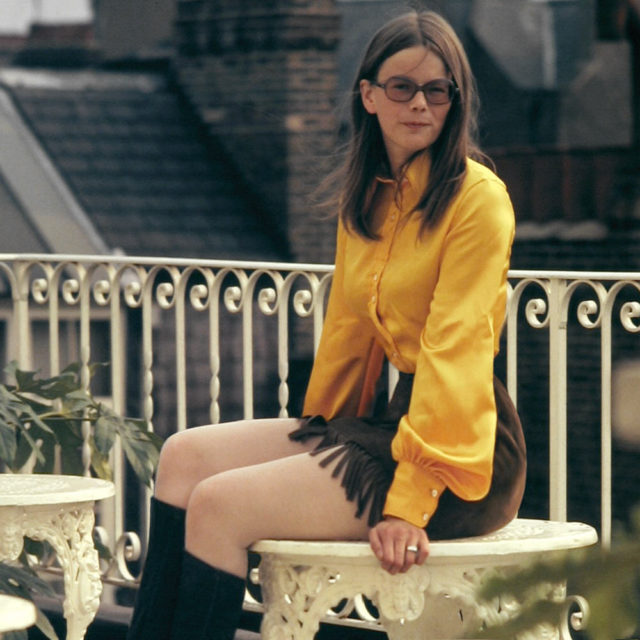
The decade began with a continuation of the hippie look from the 1960s, giving a distinct ethnic flavor. Popular early 1970s fashions for women included Tie dye shirts, Mexican peasant blouses, folk-embroidered Hungarian blouses, ponchos, capes, and military surplus clothing. Bottom attire for women during this time included bell-bottoms, gauchos,frayed jeans, midi skirts, and ankle-length maxi dresses. Hippie clothing during this time was made in extremely bright colors, as well as Indian patterns, Native American patterns, and floral patterns.Women’s hippie accessories of the early 1970s included chokers, dog collars, handcrafted neck ornaments, and accessories made from natural elements like wood, shells, stones, feathers, Indian beads and leather. All of these replaced standard jewelry. Unisex hippie accessories included headbands, floppy hats, balumba balls, flowing scarves, Birkenstocks, and earth shoes
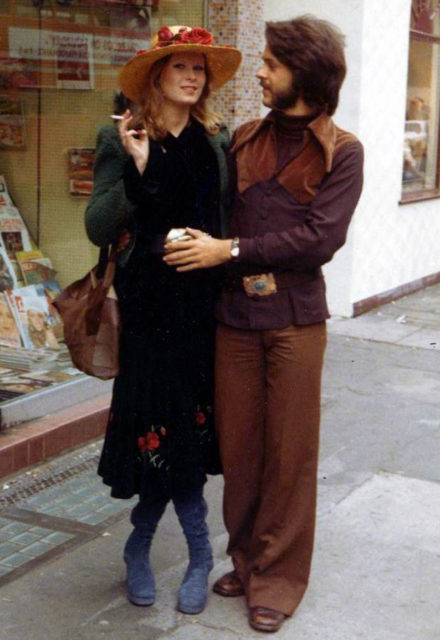
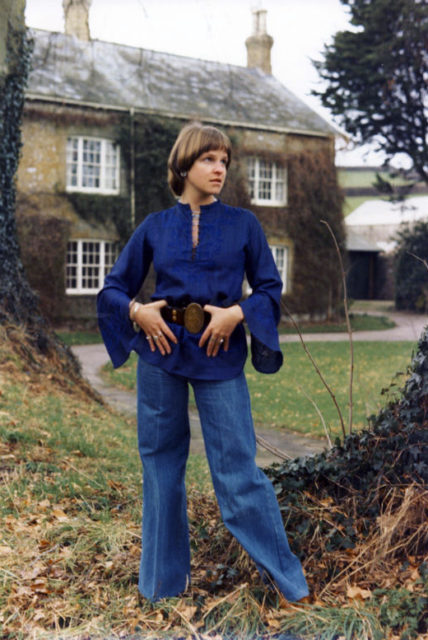
In 1977, fashion became more baggy. This caused much controversy, as women with trim figures bemoaned not being able to flaunt them while heavier women complained the looser clothes made them look even larger. To make up for this, it became fashionable to show more skin. This resulted in shirts being unbuttoned, sleeves being rolled up, and tops being strapless, see-through, and lacy. Shiny satin and gold colors were also used to make up for the lack of tighter clothing. Styles became curvier in 1978, with shoulder pads, tighter skirts, and narrower waistlines. The silhouette that resulted was an inverted triangle, it was positively received by the general public. By 1977, pants were only flared slightly and sometimes not flared at all.
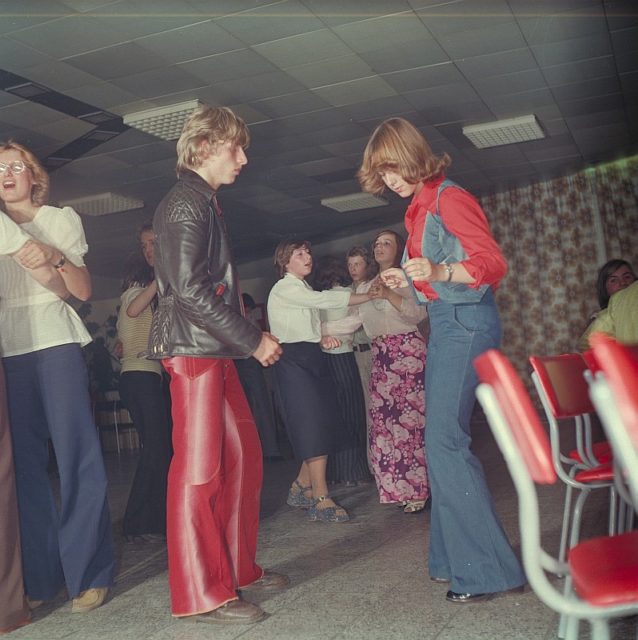


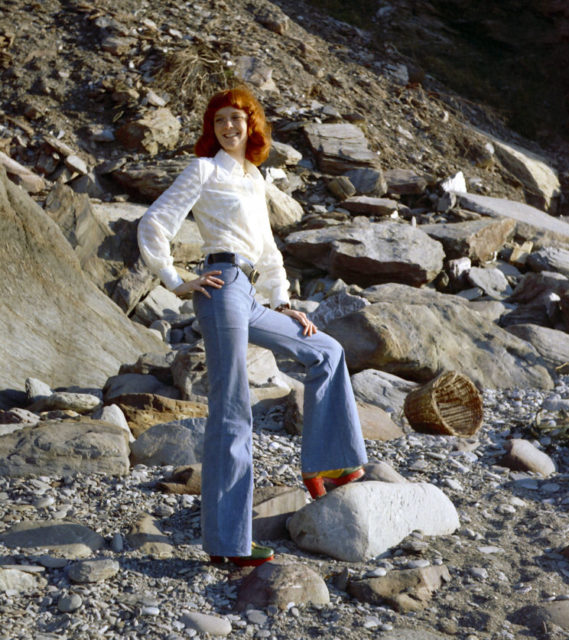
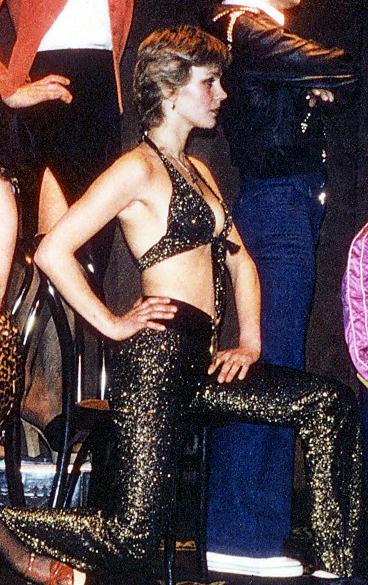
Although the hippie look was widespread, it was not adopted by everyone. Many women still continued to dress up with more glamorous clothes, inspired by 1940s movie star glamour. Other women just adopted simple casual fashions, or combined new garments with carefully chosen secondhand or vintage clothing from the 1930s, 1950s and 1960s. More simple early 1970s trends for women included fitted blazers (coming in a multitude of fabrics along with wide lapels), long and short dresses, mini skirts, maxi evening gowns, hot pants (extremely brief, tight-fitting shorts) paired with skin-tight T-shirts, his & hers outfits (matching outfits that were nearly identical to each other), and flared pants. Pastel colors were most commonly used for this style of clothing, such as mauve, peach, apple green, pink, yellow, white, wheat, camel, gray, and baby blue. Rust, tangerine, copper, forest green, and pistachio became more popularized from 1973 onwards. Sweaters were a huge phenomenon in the early 1970s, often outfits being judged entirely by the sweater. This fragmented into more styles, such as sweater coats, sweater dresses, floor-length sweaters, and even sweater suits. Many of them were trimmed with fur, especially faux. Chunky, shawl-collared, belted cardigans, often in brown and white, were also commonplace
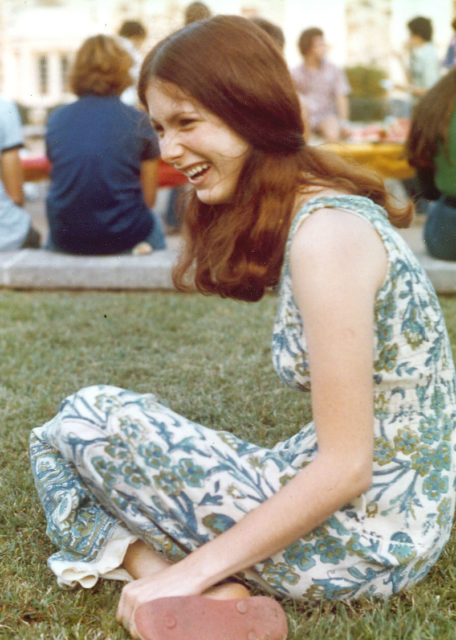

Disco fashion was generally inspired by clothing from the early 1960s. Disco clothes worn by women included tube tops, sequined halterneck shirts, blazers, spandex short shorts, loose pants, form-fittingspandex pants, maxi skirts and dresses with long thigh slits, jersey wrap dresses, ball gowns, and evening gowns. Shoes ranged from knee-high boots to kitten heels, but the most commonly worn shoes were ones that had thick heels and were often made with see-through plastic.
